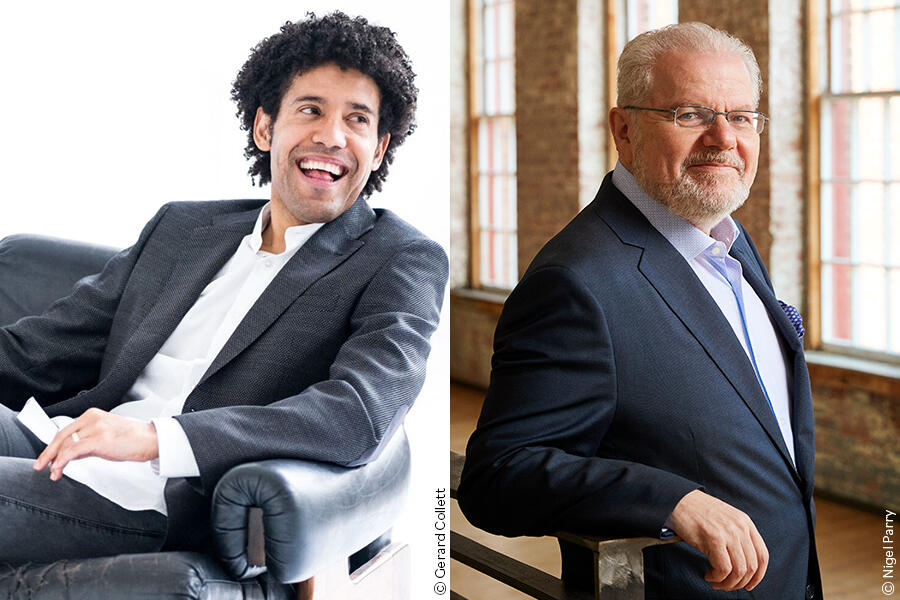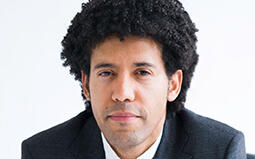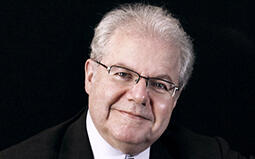- Home
- Concerts
- Subscription Concerts
- Program B
- No. 2050 Subscription (Program B)
No. 2050 Subscription (Program B)

Program
Schumann / Manfred, incidental music Op. 115 - Overture
The German composer Robert Schumann (1810–1856), although opting to be a musician, took after his bookseller-author father in literary aptitude. Not surprisingly, his compositions owe a great deal to literature, the fine examples being Papillons and Kreisleriana for piano respectively inspired by Romantic writers Jean Paul and E. T. A. Hoffmann, not forgetting Scenes from Goethe’s Faust for voices and orchestra.
The incidental music Manfred was penned in 1848 during the Dresden years (1844–1850) of Schumann who had recovered from a serious nervous breakdown. His Piano Concerto (1845), Symphony No. 2 (1846) and only finished opera Genoveva (1848) also date from this fruitfully creative period.
The dramatic poem Manfred (1817) by the English poet Lord Byron, very likely inspired by Goethe’s Faust (Part One: 1808 / Part Two: 1832), is said to have influenced Nietzsche’s concept of “Übermensch (Superman).” Set in the medieval Alps, the poem features the Faustian title role who feels terribly guilty about having driven his lover to her death. Aspiring to forget the sinful past, Manfred summons spirits with his supernatural power but they are unable to grant him oblivion.
Schumann’s Overture captures torments and sorrows covering the overall story concluded by Manfred’s death. Three-chord blows open the slow introduction. Trumpets eventually announce the start of the main Allegro section in sonata form, of which the first theme with syncopated rhythms (displacement of accents) is especially passionate and dramatic.
[Kumiko Nishi]
Mozart / Piano Concerto No. 25 C Major K. 503
Highly gifted but short-lived, Wolfgang Amadeus Mozart (1756–1791) is known first and foremost for his divinely inspired works of timeless beauty. On top of that, he blazed a trail for the new lifestyle of composers of coming generations when he went freelance in 1781 after serving the Salzburg court.During the last decade of his life before his death in 1791, he, now based in Vienna, earned his daily bread by composing, performing concerts, giving private lessons and having his works published.
Concerto for piano solo was the most important genre for Mozart to shine in the city’s music scene both as a composer and pianist (since he was a wunderkind, piano was the instrument he excelled at the most). Incidentally, he left us about fifty concertos, almost half of which are written for solo piano. For himself to serve as the soloist, he wrote in Vienna as many as six numbered piano concertos (No. 14 [K. 449] – No. 19 [K. 459]) only in 1784 and six more (No. 20 [K. 466] – No. 25 [K. 503]) in 1785–1786 to stylistically perfect the Classical piano concerto. They will be followed sporadically by No. 26 Coronation (K. 537, 1788) and No. 27 (K. 595, 1791).
Completed in December 1786, No. 25 in C major (K. 503) thus crowns this series of piano concertos penned in quick succession. Its stark tonal contrast with the previous Piano Concerto No. 24 in C minor is noticed at times, while its grand powerfulness and the key is often linked to Mozart’s last symphony No. 41 in C major Jupiter (1788). The majestic character of No. 25’s opening movement in sonata form is immediately confirmed at the outset by the orchestra giving the forceful, fanfare-like first theme. The slow movement in F major with the two contrastive themes, lets the piano sing gracefully as if improvising. The finale is a rondo sonata without cadenza. The danceable recurrent theme given at the start evokes the ballet music Gavotte, that Mozart wrote for his opera Idomeneo (1781).
[Kumiko Nishi]
R. Strauss / Ein Heldenleben, symphonic poem Op. 40 (A Hero’s Life)
While Mozart is frequently likened to the celestial due to his heavenly fine compositions, the composer whose music is tied to the notion of the hero most tightly is surely Beethoven (1770–1827). He even named his third symphony (1803) Eroica (Heroic) reusing a theme from his Die Geschöpfe des Prometheus (The Creatures of Prometheus), a ballet about the heroic Greek god. Beethoven himself embodies the hero as well for he fought against deafness – a vital blow to a musician – to create revolutionary and philanthropic works.
In the Romantic period, Richard Strauss (1864–1949) who was already a big name both as a composer and conductor followed Beethoven’s footsteps. The Bavarian composer created what brilliantly closed his achievements in the genre of the symphonic poem, choosing the same subject, heroism, the same home key (E-flat major) and the same central instrument (horns) as Beethoven’s Eroica. After this mighty work entitled Ein Heldenleben (A Hero’s Life) (1898), Strauss would never compose a symphonic poem to forge a new path as an opera composer (according to him, Symphonia Domestica [1903] and Eine Alpensinfonie [An Alpine Symphony] [1915] are, though programmatic, not categorized as symphonic poems).
Strauss equivocated on the identification of “a hero.” However, it is generally believed that Ein Heldenleben is autobiographical, except that it was too early for the then-thirty-four-year composer to “look back” at his latter life as he would live to eighty-five. The work consists of six sections (performed seamlessly without pause) with titles, although Strauss didn’t allow them to be printed on the published scores.
I Der Held (The Hero) begins with horns and low strings announcing the high-spirited passionate theme of the hero. II Des Helden Widersacher (The Hero’s Adversaries), a sort of scherzo, ridicules critics who lashed out against the hero, then III Des Helden Gefährtin (The Hero’s Companion), a slow section, lets the violin solo depict Pauline, Strauss’ variable but lovable wife. A trumpet fanfare opens IV Des Helden Walstatt (The Hero at Battle) where the “companion (Pauline)” theme supports the hero’s fight against his hostile critics. The spectacular victory of the couple is followed by V Des Helden Friedenswerke (The Hero’s Works of Peace) where Strauss “auto-quotes” about ten of his previous pieces including the symphonic poems Don Juan, Thus Spoke Zarathustra, Till Eulenspiegel’s Merry Pranks, Macbeth and Don Quixote. With an opening English horn solo, VI Des Helden Weltflucht und Vollendung (The Hero’s Retreat from the World and Completion) invites us to a pastoral setting the old hero retreats to, where he thinks back on what he has done. The music comes to a calm climax with the horn solo and the violin solo melodies staying together, prior to the stately brass closing.
[Kumiko Nishi]
Artists
 ConductorRafael Payare
ConductorRafael Payare
With his innate musicianship, charismatic energy, gift for communication and irresistibly joyous spirit, Rafael Payare is “electrifying in front of an orchestra” (Los Angeles Times). Currently, he is Music Director of the Orchestre symphonique de Montréal and the San Diego Symphony, Principal Conductor of Virginia’s Castleton Festival and Conductor Laureate of Northern Ireland’s Ulster Orchestra.
Born in Venezuela in 1980, he first discovered classical music at age 14, when he began playing horn with the country’s El Sistema program. From 2001 to 2012 he served as Principal Horn of the Simón Bolívar Symphony Orchestra, taking part in tours and recordings with Gustavo Dudamel and other eminent conductors including Claudio Abbado, Lorin Maazel, Simon Rattle, and Giuseppe Sinopoli, who first inspired him to conduct himself. Receiving conducting training from El Sistema founder José Antonio Abreu and subsequent mentors Maazel and Krzysztof Penderecki, he went on to lead all of Venezuela’s major orchestras.
The first prize winner at the Denmark’s Malko Competition for Young Conductors in 2012, he has made debuts and forged long-standing relationships with many of the world’s preeminent orchestras, opera houses and festivals, including the Wiener Philharmoniker, Gewandhausorchester Leipzig, Staatskapelle Berlin, London Symphony Orchestra, Boston Symphony Orchestra, Chicago Symphony Orchestra, Los Angeles Philharmonic, Royal Opera House, Staatsoper Berlin, BBC Proms and the Edinburgh International Festival.
He made his NHK Symphony Orchestra debut in the summer of 2017 before his first appearance as its subscription concert in 2020 with an all Shostakovich program. For their coming collaboration, he will give an Austro-German program featuring Mozart, Schumann and Richard Strauss, alongside the pianist Emanuel Ax who served as the soloist at Payare’s sensational New York Philharmonic debut in 2022.
 PianoEmanuel Ax
PianoEmanuel Ax
Born in 1949 to Polish parents in what is today Lviv, Ukraine, Emanuel Ax moved to Winnipeg, Canada with his family when he was a young boy. He made his New York debut in the Young Concert Artists Series, and in 1974 won the Arthur Rubinstein International Piano Master Competition in Tel Aviv. In 1975 he won the Michaels Award of Young Concert Artists, followed four years later by the Avery Fisher Prize.
One of the most sought-after soloists, he has shared the stage with the world’s foremost orchestras. An enthusiastic chamber musician as well, his trio with Leonidas Kavakos and Yo-Yo Ma launched an ambitious, multi-year project to record all the Beethoven trios and symphonies arranged for trio.
He has received Grammy Awards for the second and third volumes of his cycle of Haydn’s piano sonatas, and for a series of recordings with Yo-Yo Ma of the Beethoven and Brahms sonatas for cello and piano. His last visit to Japan was in November 2015 but these concerts will be his first appearance with the NHK Symphony Orchestra since June 2002, when he performed Brahms’s Piano Concerto No. 2 under the baton of Charles Dutoit, then the orchestra’s Music Director.
Ticket
Program B
No. 2050 Subscription (Program B)
Suntory Hall
Google Map
Seating Chart
Single Tickets Release Date
Pre-sales for Subscribers:Wednesday, July 23, 2025 10:00am
*about subscribers
Sale to General Public:Sunday, July 27, 2025 10:00am
Price
| S | A | B | C | D | |
|---|---|---|---|---|---|
| Ordinary Ticket | 12,000 | 10,000 | 8,000 | 6,500 | 5,500 |
| Youth Ticket | 6,000 | 5,000 | 4,000 | 3,250 | 2,750 |
*tax included
*Subscribers receive a 10% discount (Available at NHKSO WEB Ticket and N-Kyo Guide)
*For wheelchair-accessible seats, please refer to the N-Kyo Guide
*Please note that single tickets may not be available depending on ticket price range
Youth Tickets
Youth Tickets are great options for those of 29 years old and younger
Subscription tickets
Release Date
ANNUAL SUBSCRIPTION TICKETS
Sun., July 13, 2025 10:00am
[For Subscribers: Sun., July 6, 2025 10:00am]
Where to buy
NHKSO WEB Ticket | Thu., November 20 (In English / Seats not selectable on the English site)
NHKSO WEB Ticket | Fri., November 21 (In English / Seats not selectable on the English site)
NHKSO WEB Ticket (In Japanese / Seats selectable)
N-Kyo Guide (Purchase by telephone only)
Organized by: NHK (Japan Broadcasting Corporation) / NHK Symphony Orchestra, Tokyo
*Repertoire, conductor, soloists and program order are subject to change without notice.
*Pre-school children are not allowed in the concert hall.


